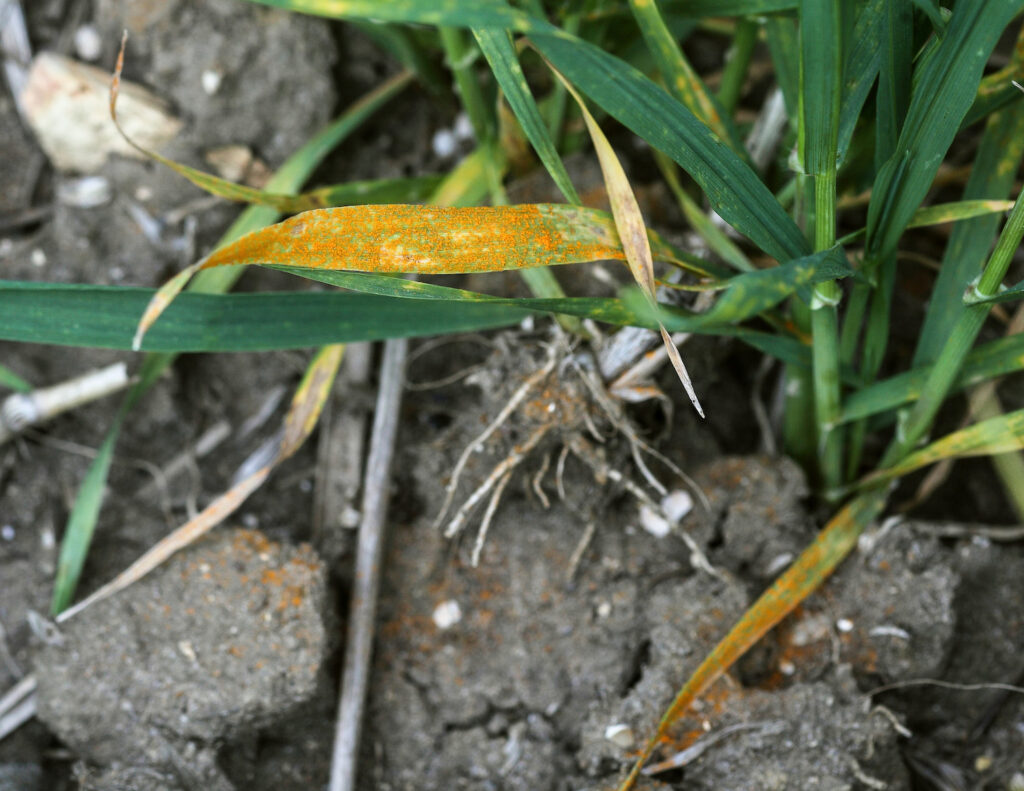Stay vigilant against yellow rust at T2
20th May 2022
As the T2 spray timing for crops approaches, growers are advised to stay vigilant against yellow rust to maximise yield potential.

Yellow rust in wheat variety Warrior at GS 31-32.
Jeff Fieldsend, commercial technical manager at FMC, explains that after a fairly disease-free start to the season, yellow rust has recently been appearing more frequently and with increased severity. It is therefore essential that growers continue a high level of protection as the season progresses.
“We’ve seen increasing reports of the disease in winter wheat, especially in Skyfall and Zyatt, as well as in Planet spring barley, and spring wheat variety Miluka,” he says.
Crops grow quickly at this point in the season, with the warm conditions and longer days, which the disease thrives in. If we add rainfall into the equation, many more growers will start to spot the yellow pustular disease spores.
“Yellow rust affects the photosynthetic ability of crops, primarily by reducing leaf area, so infection at this rapid growth stage could cause significant impact for final yields.”
Mr Fieldsend notes that growers in the east generally see higher yellow rust pressure but recently many more infections are being picked up in crops in the west.
“Regardless of location, it is important to stay vigilant and get effective fungicides applied to crops, as yellow rust can crop up unexpectedly.
“Farmers have a wide range of fungicide options to choose from to control yellow rust, but Wolverine, which contains a co-formulation of SDHI and metconazole, covers multiple bases.
“Much of the new chemistry that controls yellow rust can be very expensive, but Wolverine provides a cost-effective option for growers and delivers a high level of activity on a range of diseases. This means growers can ensure they’re providing good protection for the crop and also make their pennies go further,” he adds.
Applications of Wolverine should be made at 1.5–2.0 litres per hectare and can be applied up to and including flowering just complete (GS 69). A maximum of two treatments should be made per crop.
“There are a lot of well-developed crops currently in the ground, so protecting them at T2 and beyond will offer good value for money and deliver enhanced yield benefits,” he adds.
To find out more about Wolverine, visit the FMC website https://fmc-agro.co.uk/fungicides/wolverine
